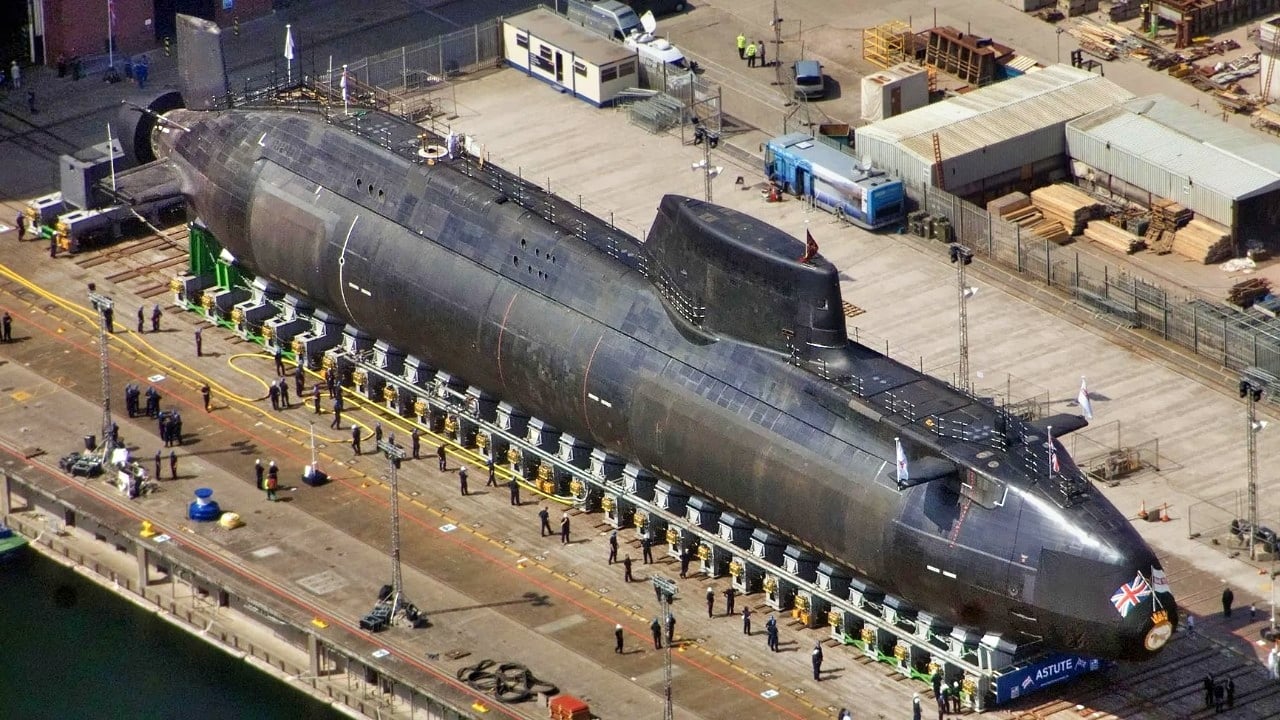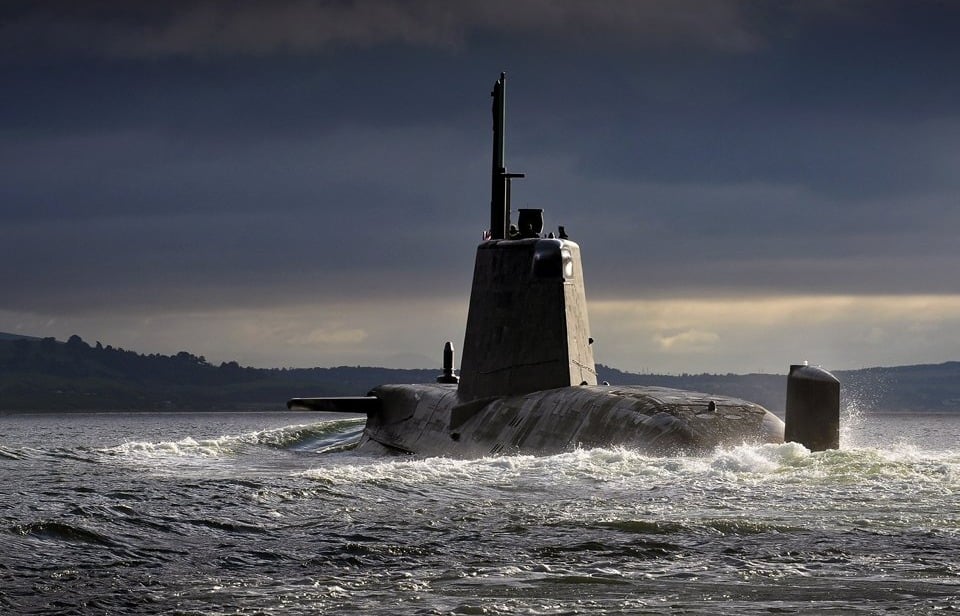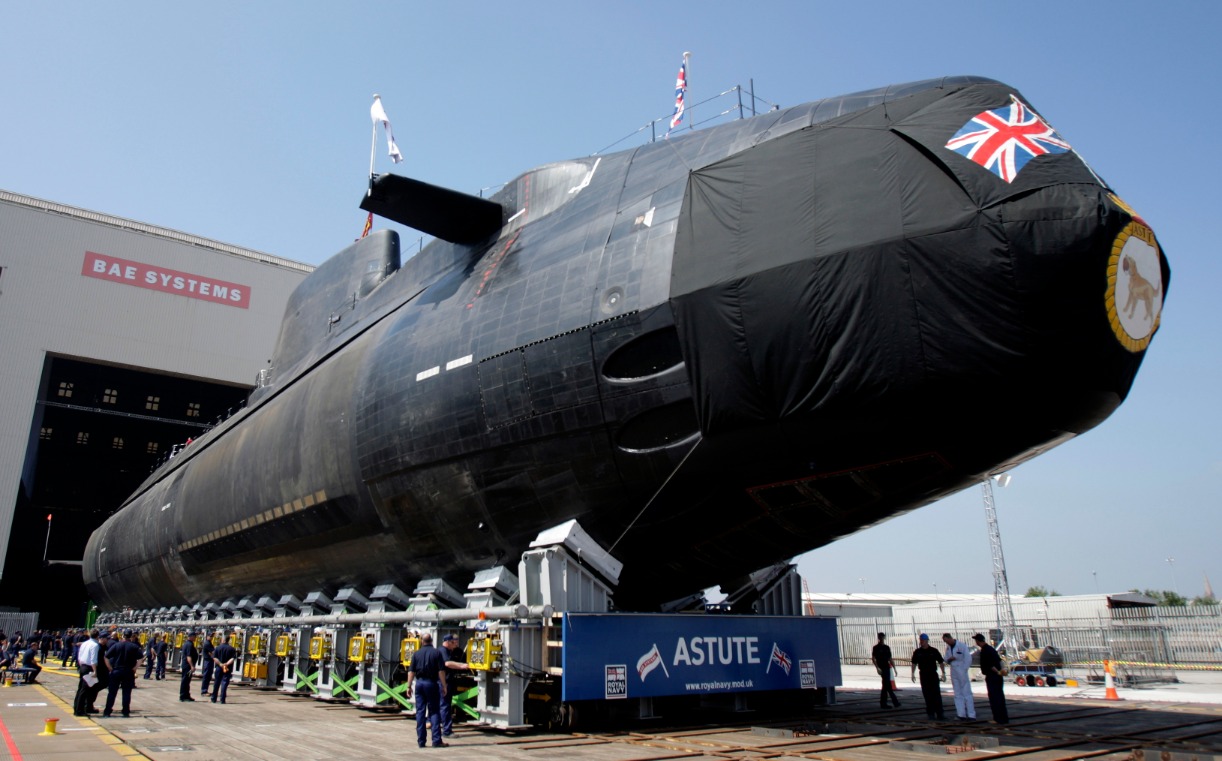Astute-Class: The Best Nuclear Attack Submarine on Earth (Not Made in USA)
The British Royal Navy's Astute-class submarines may now outshine the U.S. Navy’s Virginia-class subs, raising questions about the American naval shipbuilding trajectory.
What You Need to Know: The British Royal Navy's Astute-class submarines may now outshine the U.S. Navy’s Virginia-class subs, raising questions about the American naval shipbuilding trajectory.

-While the Virginia-class boasts impressive firepower, the Astute-class outperforms in speed, maintenance costs, and reactor design—its Rolls-Royce pressurized water reactor requires only one refit per service life.
-In contrast, Virginia-class subs have slower speeds and higher maintenance demands.
-Given the U.S. Navy’s current shipbuilding challenges, adopting a smaller, more efficient design like the Astute could offer a solution to America’s declining maritime power and ensure competitiveness against nations like China.
Could Britain’s Astute-Class Submarines Surpass America’s Virginia-Class?
There’s a famous story that comes from the end of World War II. The U.S. Navy’s head honcho was looking at a combined flotilla of American and British warships. He phoned his British counterpart and teased, “How does it feel to be commanding the world’s second-largest navy?” To which, the British admiral responded, “How does it feel to be commanding the world’s second-rate navy?”
The reason this moment is key is because, for the first time in centuries, the British Royal Navy had fewer ships in its storied fleet than another power. In this case, the Americans.
From that point on, terminal decline set into the British Empire and its military—notably its navy—was a poster child for what declining empires in their final death agonies look like.
The United States Navy, meanwhile, was churning out warships of increasing complexity like sausages. The Cold War set in, and the British continued their move into irrelevancy until ultimately their empire totally collapsed. But the Americans had created the world’s most advanced navy.
Rot in the U.S. Navy
Today, relative decline has set in the U.S. Navy. It shows: The American maritime service cannot maintain reliable shipbuilding schedules. What’s more, the ships they do have are rusting out in front of the world.
At the same time, adversarial nations, like China, continue building relatively cheap (but effective) systems, like their anti-access/area-denial (A2/AD) systems, to overcome America’s naval advantages in war.
Now, there is a chance that even in the shipbuilding domain, the Americans may be upstaged by the British. In particular, the Virginia-class nuclear submarine the Americans have committed themselves to building en masse (as a replacement for the storied Los Angeles-class attack subs) might be technically inferior to the British nuclear-powered Astute-class submarines (cue the dramatic “dun-dun-dun” music).
The Astute-class nuclear-powered attack submarine is built by the BAE Systems Maritime branch while the American Virginia-class subs are built by the General Dynamics Electric Boat and Newport News Shipbuilding. Britain’s Astute class is smaller than its American “rival.” In fact, the Virginia class is the ninth-largest submarine class in the world, according to the website, Naval Technology.
Which is Better?
In terms of engines, the Astute classes are powered by a beautiful Rolls-Royce pressurized water reactor, known as the Core H. This particular kind of reactor does not need refueling. In other words, the sub’s nuclear reactor needs only a single refit rather than two throughout its service life. This means that the Astute class is more affordable in terms of maintenance costs.

The Virginia class submarines are powered by a S9G reactor designed by General Electric. While the Virginia-class submarine can reach cruising speeds of 25 knots, the Astute class is faster at 30 knots. Between the refueling advantages and the speed, the Astute class is a better submarine than the impressive Virginia class.
Lastly, in terms of weapons, the Astute class carries six 21-inch torpedo tubes capable of firing Spearfish heavy torpedoes.
These silent killers can also deploy Tomahawk Block IV cruise missiles when engaged in land-attack operations. What’s more the Astute-class submarines can store up to thirty-eight different weapons onboard.

A Virginia-class submarine, however, has greater firepower. It has four 21-inch torpedo tubes for the ubiquitous Mk48 torpedo and possesses twelve Tomahawk vertical launching system tubes. With the Virginia Payload Module on the newest generation of Virginia-class submarines, it can carry a whopping sixty-five additional weapons in storage.
So, yes, the Virginia class is superior in weapons.
The Astute class is a better investment
Yet, in terms of speed and maintenance, the Astute class is a better investment. Sure, the weapons package isn’t as robust as the Virginia-class submarines.
But the smaller size and speed and lower maintenance costs would likely mean that the Astute class, if it were built by U.S. shipyards, would be easier to produce and cheaper.
Right now, the U.S. Navy needs a way out of its current shipyard woes. Smaller, cheaper submarines are one way to do that.
So, yes, the British might have produced a better attack submarine than the Americans.
About the Author:
Brandon J. Weichert, a National Interest national security analyst, is a former Congressional staffer and geopolitical analyst who is a contributor at The Washington Times, the Asia Times, and The-Pipeline. He is the author of Winning Space: How America Remains a Superpower, Biohacked: China’s Race to Control Life, and The Shadow War: Iran’s Quest for Supremacy. His next book, A Disaster of Our Own Making: How the West Lost Ukraine, is available for purchase wherever books are sold. Weichert can be followed via Twitter @WeTheBrandon.
Image Credit: Creative Commons.


